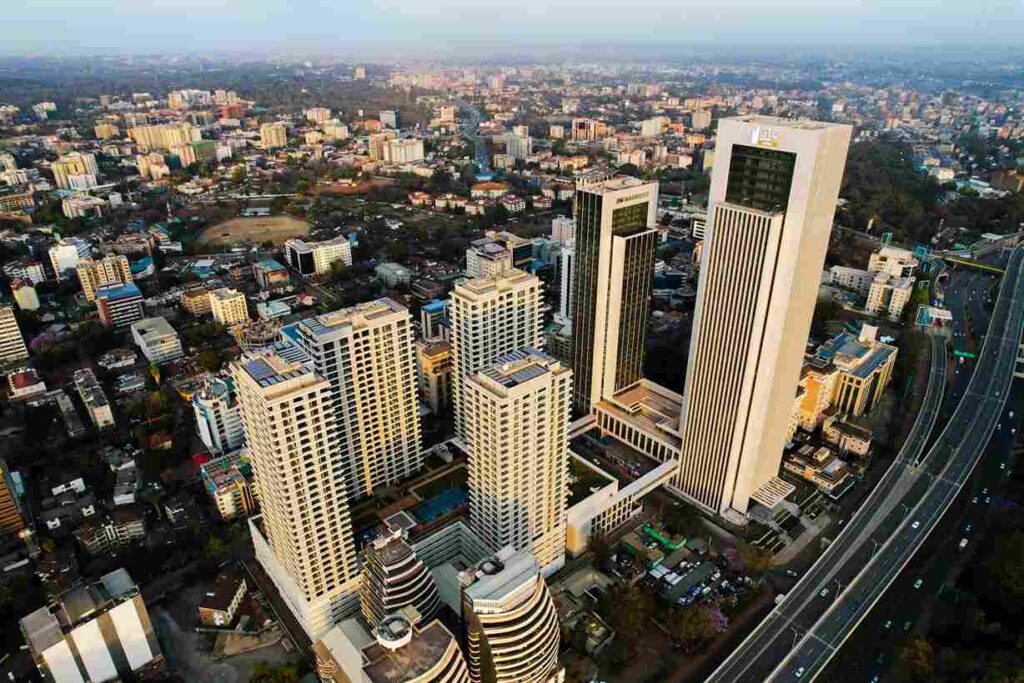Kenya’s economy is recovering but still faces several challenges, such as high inflation, currency depreciation, and high debt servicing costs, which affect key economic drivers.
It is important to look at actionable steps the government should consider to improve the key economic indicators.
Below are our recommendations for optimising the various economic drivers:
Anchoring Inflation
Anchoring the runaway inflation back to the Central Bank of Kenya’s target range will involve boosting local food production and reducing the cost of fuel since these are the key factors driving inflation.
The government should improve local food production by reforming the agricultural sector by offering farm inputs at subsidised prices and encouraging irrigation to mitigate against unpredictable weather conditions in the country.
The government has also developed a short-term strategy to improve food security by allowing duty-free maise, rice and sugar importation, expected to stabilise food prices.
The government should also address the rising fuel cost by ensuring competitiveness in the sector and reducing many tariffs involved in fuel importation to reduce the overall cost of products.
Reduced fuel prices will have a ripple effect of lowering the cost of production in all sectors of the economy hence price moderation.
Enhancing Currency Performance
The government should continue implementing fiscal and monetary policies to improve macroeconomic conditions such as inflation and balance of payments, as this will allow the exchange rate to adjust itself.
It is also essential for the government to reduce imports and their exposure to external debt denominated in foreign currencies.
For the short term, the government is trying to preserve forex reserves by importing oil on credit through a government-government deal.
We expect this to manage the situation since oil imports comprise a huge portion of forex reserves.
The government has also turned to its multilateral lenders, such as IMF and World Bank, to get loans to boost the forex reserves and reduce the risk of dollar shortage.
Improving Business Environment (PMI index)
The government can improve the business environment by anchoring the runaway inflation to improve consumer demand due to accommodative prices.
Further, the government should develop business-friendly policies that will lower the cost of production, thus reducing the prices for the final products and consequently increasing demand.
It is also essential for CBK to manage liquidity in the industry through monetary policies such as reverse repos to ensure price stability.
Reducing Public Debt and Debt Servicing Costs
One way to reduce the government debt burden is to ensure fiscal consolidation to reduce the estimated fiscal deficits of 5.7% in the revised FY’2022/2023 budget and 4.3% in the FY’2023/2024 budget.
This will reduce the need for borrowing to bridge the fiscal gap and reduce the high debt service to revenue.
For consolidation to be realised, the government must seal corruption and tax loopholes, reduce recurrent expenditure and prioritise projects of key economic and social benefits. The government should also continue shunning expensive bilateral debts and concentrate more on multilateral debts offered at lower rates.
The government should also prioritise internal borrowing to reduce its exposure to forex exchange risks since more than half of our debt is currently foreign currency denominated.
Interest Rates
To manage the increasing interest rates in the markets, the government should reduce its borrowing appetite as this will increase its bargaining power with investors in the market.
Further, improving the business environment and key macroeconomic indicators such as inflation and currency depreciation is prudent to boost investor confidence and investor sentiments concerning risks.
Notably, reduced risks in the economy will lead to investors demanding moderate rates while borrowing as they are confident of full redemption at the time of maturity,
Enhancing Private Sector Credit Growth
Promoting capital markets remains one of the significant ways to achieve at least 100.0% domestic credit to the private sector as a percentage of GDP, which means there is a credit deficit of at least Kshs—eight trillion from the current 33% to GDP ratio.
Capital markets remain under-developed, contributing about 1.0% of total funding to businesses compared to 99.0% by banks.
This scenario can be changed by educating the masses about the markets and revising its regulations to reduce the red-tape measures and ease access.
Improving the sector will promote new businesses and diversify the economy, thus supporting economic growth. Besides, the government should also significantly increase the amount of credit extended through its programs, such as the Financial Inclusion Fund and Women Enterprise Fund, to substantially bridge the 67.9% private sector credit to GDP gap.
Improving Balance of Payment (BOP)
The government can improve the current account deficit and BOP position by ensuring self-sufficiency by reducing imported commodities that can be produced locally.
The government should also adopt policies that will ensure the diversification of exports by promoting value addition on agricultural produce and encouraging manufacturing.
This can be achieved by concentrating on formulating tax policies and reforms aligned with economic goals that do not impede productivity.
The government can also attract Foreign Direct Investments (FDIs) by coming up with actions such as offering incentives, reducing bureaucracies, and improving infrastructure.
Source: Cytonn Investments




